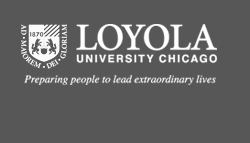Document Type
Article
Publication Date
7-10-2020
Publication Title
Frontiers in Plant Science
Volume
11
Issue
1058
Pages
1-11
Publisher Name
Frontiers Media
Abstract
Starch is the dominant reserve polysaccharide accumulated in the seed of grasses (like wheat). It is the most common carbohydrate in the human diet and a material applied to the bioplastics and biofuels industry. Hence, the complete understanding of starch metabolism is critical to design rational strategies to improve its allocation in plant reserve tissues. ADP-glucose pyrophosphorylase (ADP-Glc PPase) catalyzes the key (regulated) step in the synthetic starch pathway. The enzyme comprises a small (S) and a large (L) subunit forming an S2L2 heterotetramer, which is allosterically regulated by orthophosphate, fructose-6P, and 3P-glycerate. ADP-Glc PPase was found in a phosphorylated state in extracts from wheat seeds. The amount of the phosphorylated protein increased along with the development of the seed and correlated with relative increases of the enzyme activity and starch content. Conversely, this post-translational modification was absent in seeds from Ricinus communis. In vitro, the recombinant ADP-Glc PPase from wheat endosperm was phosphorylated by wheat seed extracts as well as by recombinant Ca2+-dependent plant protein kinases. Further analysis showed that the preferential phosphorylation takes place on the L subunit. Results suggest that the ADP-Glc PPase is a phosphorylation target in seeds from grasses but not from oleaginous plants. Accompanying seed maturation and starch accumulation, a combined regulation of ADP-Glc PPase by metabolites and phosphorylation may provide an enzyme with stable levels of activity. Such concerted modulation would drive carbon skeletons to the synthesis of starch for its long-term storage, which later support seed germination.
Recommended Citation
Ferrero, Danisa M. L.; Piattoni, Claudia V.; Asencion Diez, Matías D.; Rojas, Bruno E.; Hartman, Matías D.; Ballicora, Miguel A.; and Iglesias, Alberto A.. Phosphorylation of ADP-Glucose Pyrophosphorylase During Wheat Seeds Development. Frontiers in Plant Science, 11, 1058: 1-11, 2020. Retrieved from Loyola eCommons, Chemistry: Faculty Publications and Other Works, http://dx.doi.org/10.3389/fpls.2020.01058
Creative Commons License

This work is licensed under a Creative Commons Attribution 4.0 International License.
Copyright Statement
© Ferrero et al., 2020.



Comments
Author Posting © Ferrero et al., 2020. This article is posted here by permission of Ferrero et al. for personal use, not for redistribution. The article was published in Frontiers in Plant Science, July 2020, https://doi.org/10.3389/fpls.2020.01058